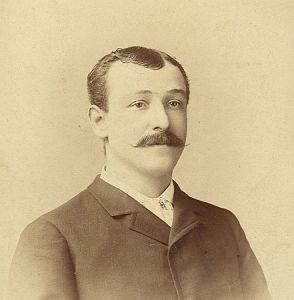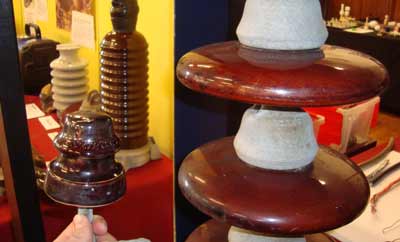
William Cermak
Pioneer of the electric insulator
The accomplishments and life of William Cermak 1856-1907

Pioneer of Electric Insulators:
William Cermak headed General Electric's porcelain factory that moved from New York City to Schenectady, NY in 1889. Cermak found he had trouble creating high quality porcelain insulators through the dry-process (granulated clay pressed dry in molds). Cermak, along with his team of engineers, developed the petticoated insulator (insulator that increases length of electricity passage on the surface and continuously keeps a part of the path dry) that could withstand 10,000 volts. Cermak continued his work on porcelain insulators with General Electric.
Biography
William Cermak, a master potter and son of master potter Josef Cermak, was born in 1856 in Kasejovice, Blatna, of what is now the Czech Republic, and came to the United States in 1886 at age 30. Several other Cermaks seemed to have come at about the same time, people who were probably cousins or brothers of William. One settled in the midwest and his branch of the family produced Mayor Anton J. Cermak of Chicago, who died in 1933 of an assassin's bullet intended for President Franklin Roosevelt.William lived on the East Side in New York City in a cold water flat, one bathroom to each floor. He found work at a foundry or pottery in the lower east side, and sent for his wife and three sons, Frank, Edward, and Charles. They lived somewhere in or near downtown Schenectady. There exists a picture of the Cermak boys on the porch of a school described as being "on lower Union Street." William soon came to the attention of a "head hunter" searching for good artisans and invited him to move to Schenectady to become the head of the porcelain division of the new Edison Electric Co., which merged with the Edison Machine Works to form General Electric in 1892.
Up through the early 1890s, electrical insulators were made of glass, which was fragile and not capable of with- standing high voltages. In 1893, William Cermak, working with his subordinate John J. Kraus, developed the “petticoated” porcelain insulator usable with 10,000 volt transmission lines, a breakthrough that enabled the rapid growth of electrification in the United States. In 1904, after the Cermaks moved to Fourth Ave in Schenectady's Mont Pleasant area, a neighborhood where many other Czechs lived, William was appinted Alderman for the Ninth Ward. At the time, Frank was 24 and working at General Electric, learning from his father and helping him. He later became an Alderman himself, and his son, also named Frank, was a Councilman in the Schenectady County Town of Niskayuna at the time of his death in 1971.
In 1905, William became ill, so he and his wife and son Edward went back to Kasejovice for his health, leaving Frank
to care for the ceramics building. Kasejovice is near the famous baths at Marienbad. But the intended respite did not
help. William returned to Schenectady, continued to decline, and died two years later. He is buried in Vale Cemetery.
This biography was compiled with the gracious assistance of Dr. Ethel Cermak Tomkins, William's granddaughter, who provided the photograph and the clippings from which the information was taken.This page was created by Ed Reilly and Breanna Day
Visit the National Insulator Association (NIA)
Back to Engineering Hall of Fame
Copyright 2010 Edison Tech Center


